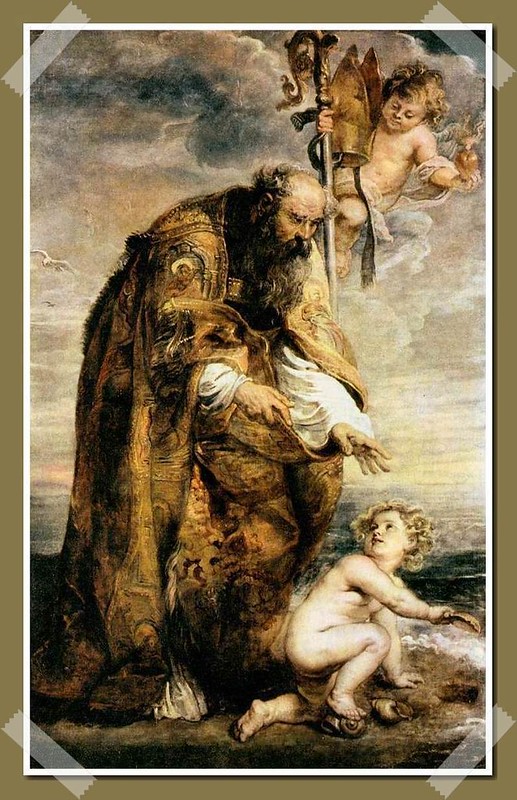Augustine, St.

Saint Augustine (venerable) (354–430) – In Christian legend, bishop of Hippo in Africa; Doctor of the Church; author of The City of God, a defense of Christianity against pagan philosophy, and an autobiography, The Confessions. Feast, 28 August.
Augustine’s father was a pagan, but his mother, Monica, was a Christian. As a young man Augustine devoted his life to the pursuit of pleasure (he had numerous mistresses) and the study of philosophy. As he was interested only in some heretical sects, his mother prayed for his conversion to Catholic Christianity. Eventually, her prayers were answered; Augustine was baptized by St. Ambrose, bishop of Milan.
The most famous legend regarding the saint is called the vision of St. Augustine and is frequently portrayed in art. While Augustine was busy writing his Discourse on the Trinity, he wandered along the seashore lost in meditation. Suddenly he saw a child who had dug a hole in the sand and was bringing water from the sea to fill it. Augustine stopped and asked the boy what he was doing. The boy replied that he wanted to empty into the hole all of the water of the sea.
“Impossible,”
the saint replied to the child.
“Not more impossible than for thee, O Augustine, to explain the mystery of the Trinity,”
the child answered.
St. Augustine is often portrayed in his episcopal vestments carrying a book and a heart, symbol of his love and learning. Sometimes he is shown as a young man, before his conversion, reading or disputing with his mother, St. Monica. He is also sometimes painted in the black habit of the Augustinian Order, which legend credits him with founding.
SOURCE:
Encyclopedia of World Mythology and Legend, Third Edition – Written by Anthony S. Mercatante & James R. Dow Copyright © 2009 by Anthony S. Mercatante










